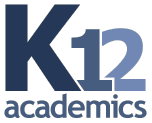- Education Topics
- Achievement Gap
- Alternative Education
- American Education Awards
- Assessment & Evaluation
- Education during COVID-19
- Education Economics
- Education Environment
- Education in the United States during COVID-19
- Education Issues
- Education Policy
- Education Psychology
- Education Scandals and Controversies
- Education Reform
- Education Theory
- Education Worldwide
- Educational Leadership
- Educational Philosophy
- Educational Research
- Educational Technology
- Federal Education Legislation
- Higher Education Worldwide
- Homeless Education
- Homeschooling in the United States
- Migrant Education
- Neglected/Deliquent Students
- Pedagogy
- Sociology of Education
- Special Needs
- National Directories
- After School Programs
- Alternative Schools
- The Arts
- At-Risk Students
- Camps
- Camp Services
- Colleges & Universities
- Counties
- Driving Schools
- Educational Businesses
- Financial Aid
- Higher Education
- International Programs
- Jewish Community Centers
- K-12 Schools
- Language Studies
- Libraries
- Organizations
- Preschools
- Professional Development
- Prom Services
- School Assemblies
- School Districts
- School Field Trips
- School Health
- School Supplies
- School Travel
- School Vendors
- Schools Worldwide
- Special Education
- Special Needs
- Study Abroad
- Teaching Abroad
- Volunteer Programs
- Youth Sports
- For Schools
- Academic Standards
- Assembly Programs
- Blue Ribbon Schools Program
- Educational Accreditation
- Educational Television Channels
- Education in the United States
- History of Education in the United States
- Reading Education in the U.S.
- School Grades
- School Meal Programs
- School Types
- School Uniforms
- Special Education in the United States
- Systems of Formal Education
- U.S. Education Legislation
- For Teachers
- Academic Dishonesty
- Childcare State Licensing Requirements
- Classroom Management
- Education Subjects
- Educational Practices
- Interdisciplinary Teaching
- Job and Interview Tips
- Lesson Plans | Grades
- Professional Development
- State Curriculum Standards
- Substitute Teaching
- Teacher Salary
- Teacher Training Programs
- Teaching Methods
- Training and Certification
- For Students
- Academic Competitions
- Admissions Testing
- At-Risk Students
- Career Planning
- College Admissions
- Drivers License
- Educational Programs
- Educational Television
- High School Dropouts
- Higher Education
- School Health
- Senior Proms
- Sex Education
- Standardized Testing
- Student Financial Aid
- Student Television Stations
- Summer Learning Loss
Home | Lesson Plans | Working Out Word Problems |
Working Out Word Problems
Author: Marah Bates
Lesson Plan:
Unit: Math- Problem Solving
Grade: Second
Number of Students: 27
GOAL: For students to use keywords and manipulatives to help solve word problems.
OBJECTIVES: Students will be able to:
- Identify key words in math word problems
- Solve math word problems using key words
NEW YORK STATE LEARNING STANDARDS ADDRESSED:
Math Standard # 3: Students will understand mathematics and become mathematically confident by communicating and reasoning mathematically, by applying mathematics in real-world settings, and by solving problems through the integrated study of number systems, geometry, algebra, data analysis, probability, and trigonometry.
PREREQUISITE KNOWLEDGE:
- Distinguish between addition and subtraction
- Add and Subtract
MATERIALS NEEDED:
- Word Problems
- Highlighters
- Smartboard (visual representations of each problem)
PROCEDURES:
1. Teacher will explain that today we will be working on our problem solving skills. Describe how they will be detectives looking for key words.
2. Together the class will review the key words that represent the operations of addition and subtraction and create a class poster.
3. Students will read aloud the first problem displayed on the Smartboard.
4. Teacher will model the underlining (highlighting) of the key words and writing the number sentence.
5. Students will work to solve the problem.
6. Students will go through each problem one at a time.
7. After the students work on an answer, one student is selected to come up to the Smartboard. There will be a virtual representation of the word problem. Then student will move the objects to represent the problem (addition or subtraction) and write the out the number sentence and solve the problem.
8. Students will complete an exit card at the completion of the lesson to check understanding of the lesson.
ADAPTATIONS:
- Illustrations can be used to solve equations
- Manipulatives such as pop cubes can be used to represent concepts as well
ASSESSMENT:
- Teacher Observation
- Student participation
- Exit Card
Extension Activity:
- Students will work in groups to create word problems on the computer and then post them on our class web page.

